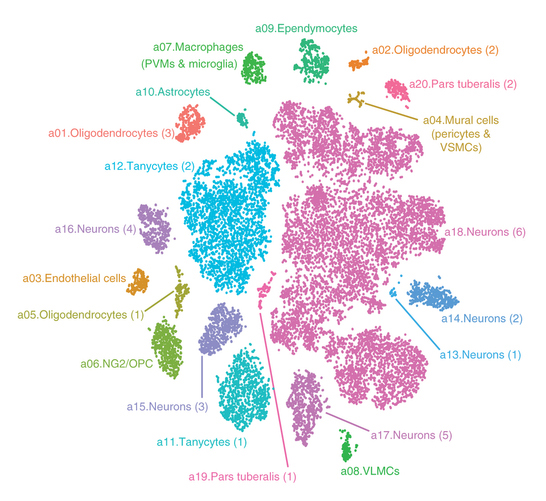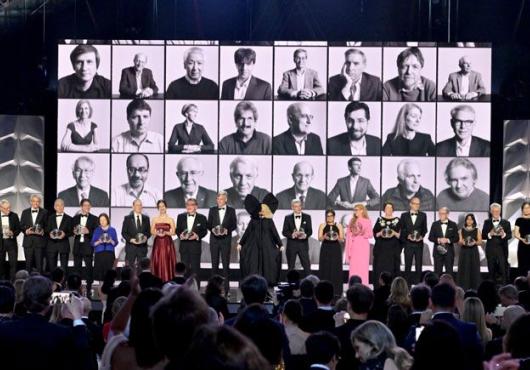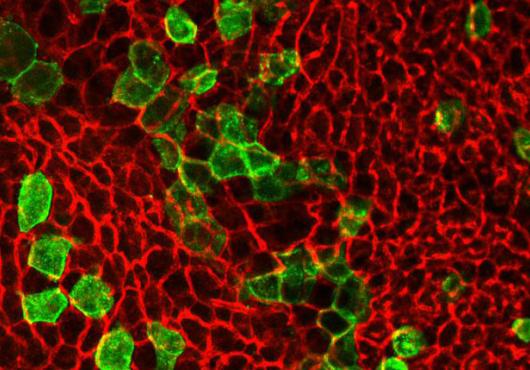
Researchers at Harvard Medical School and Beth Israel Deaconess Medical Center have catalogued more than 20,000 brain cells in one region of the mouse hypothalamus.
The study, published in Nature Neuroscience, revealed some 50 distinct cell types, including a previously undescribed neuron type that may underlie some of the genetic risk of human obesity.
This catalog of cell types marks the first time neuroscientists have established a comprehensive “parts list” for this area of the brain. The new information will allow researchers to establish which cells play what roles.
“A lot of functions have already been mapped to large regions of the brain; for example, we know that the hippocampus is important for memory, and we know the hypothalamus is responsible for basic functions like eating and drinking,” said lead author John N. Campbell, a postdoctoral fellow in the lab of co-corresponding author Bradford Lowell, HMS professor of medicine at Beth Israel Deaconess. “But we don’t know what cell types within those regions are responsible.”
“Now, with the leaps we’ve had in technology,” said Campbell, “we can profile every gene in tens of thousands of individual cells simultaneously and start to test those cell types one by one to figure out their functional roles.”
Each cell in an animal’s body carries the same genetic information. Cells take on specific roles by expressing some genes and silencing others. Drop-Seq technology, developed by study co-authors Steven McCarroll, the Dorothy and Milton Flier Associate Professor of Biomedical Science and Genetics at HMS, and Evan Macosko, HMS assistant professor of psychiatry at Massachusetts General Hospital, makes it possible to assess every gene expressed by individual cells.






